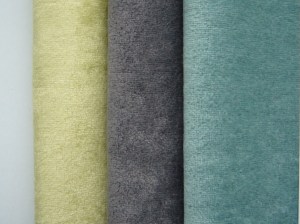
Are you as confused about the pros and cons of bamboo textiles as we were? Modern, high tech production and processing methods mean bamboo textiles are rapidly gaining in popularity. But is bamboo really a sound environmental choice?
First the excellent reasons why you might want to consider buying bamboo clothing or products for the home:
- The fibres stay naturally fresh due to their unique anti-bacterial, anti-fungal properties, which remain even after frequent washing. The fabric is ideal for those with skin reactions or allergies and fantastic for all sorts of products for the home as it will not develop mould even when exposed to moisture for long periods of time.
- The fabric is cool and comfortable to wear in hot weather due to its cellular structure which makes it extremely absorbant and able to evaporate perspiration in seconds. It allows air to pass through, remaining cool to the touch and never feeling sticky, meaning skin can breathe. It is 3-4 times more absorbent than cotton, keeping you drier in a heatwave
- Naturally blocks 91% of UVA and 98% of UVB rays providing screening from the sun’s rays, and making it ideal for curtains and soft furnishings
- Silky soft and extremely comfortable to wear and a great choice for those with sensitive skin conditions or those who have had allergic reactions to fabrics in the past. It is also anti-static.
- Bamboo is fully biodegradable by microorganisms in the soil and by sunshine thanks to its natural cellulose composition and therefore can contribute to reduced environmental impact
- As the plants grow without pesticides, herbicides or chemical additives of any kind soil balance is maintained
- Protects the environment as it needs no irrigation other than natural rainfall
- Highly sustainable: bamboo grows very fast, sometimes up to 3 feet in a night. It also does not need to be replanted, rather the stalks are cut off above the ground and will continue to grow and sprout new shoots. In addition it’s vast root system helps to prevent soil erosion and it balances the atmosphere, producing the most oxygen of all plants and consuming the most carbon dioxide. All of which reduces the impact of the textile industry.
At the present stage in the technology of fibre production, the only way to turn bamboo into a soft yarn fibre is to dissolve it using chemicals like sodium hydroxide, and then solidify the extruded filament using a chemical such as sulfuric acid. It is important that these strong chemicals are neutralised and not returned to the water system untreated. Look for a supplier who uses methods, for example enzymes, that ensure that the waste water is cleansed after processing and meets high environmental standards. Our supplier, OEcotextiles, is constantly vigilant and working to further neutralise the effects of present production methods and overcome the less eco-friendly aspects.
Overall bamboo’s positive environmental and health benefits make it a strong addition to the range of fibres available. Something tells me we’ll be seeing and hearing a lot more of bamboo in the future. Feel like sharing your experiences of this fabulous new fibre?